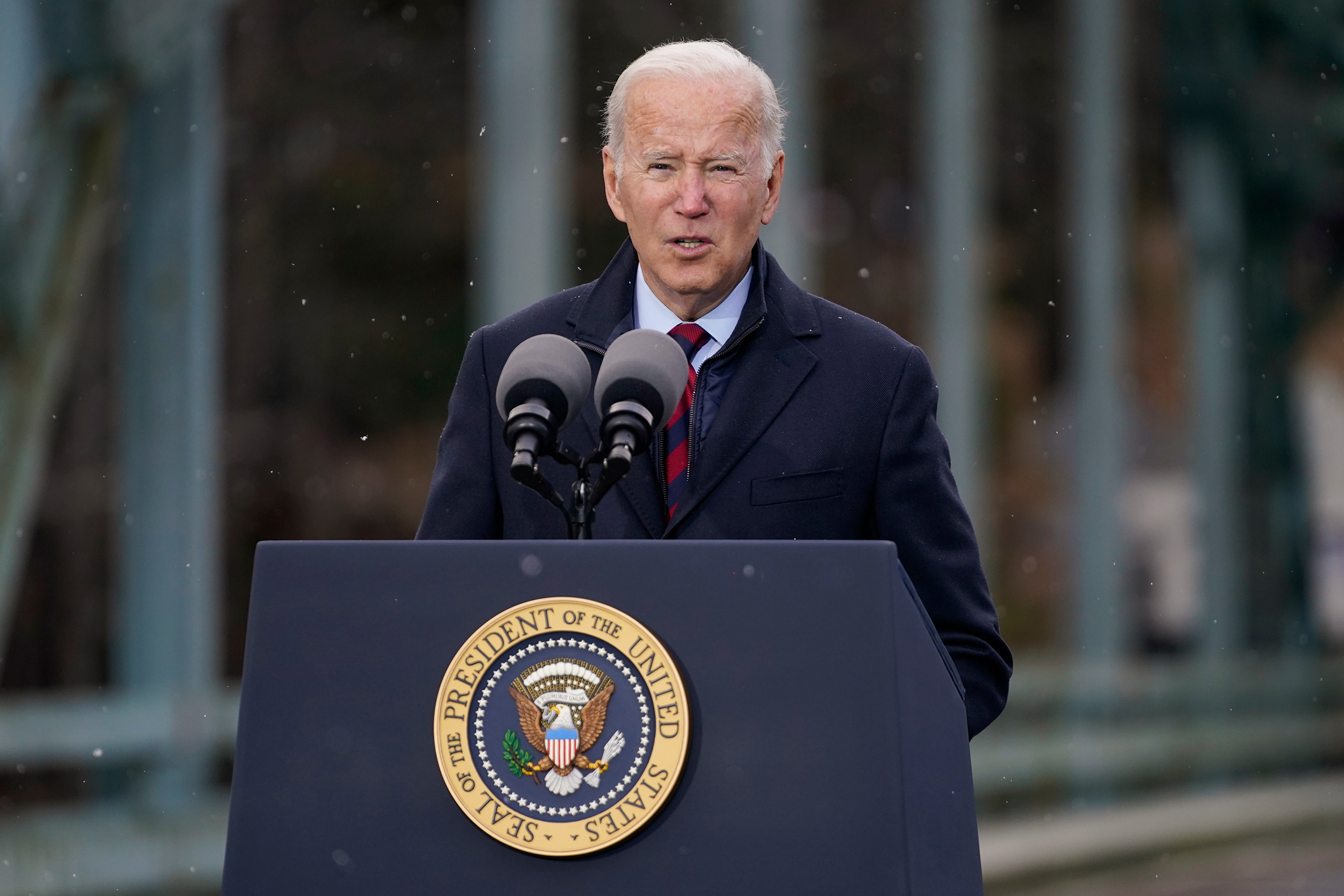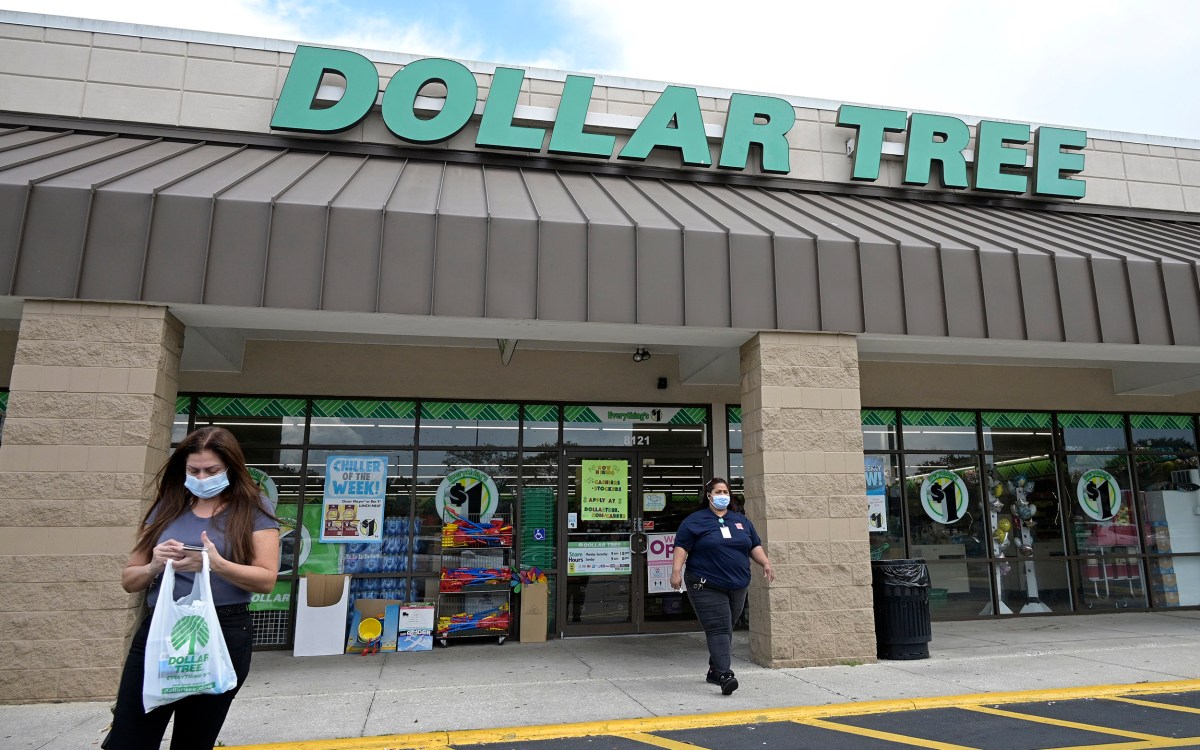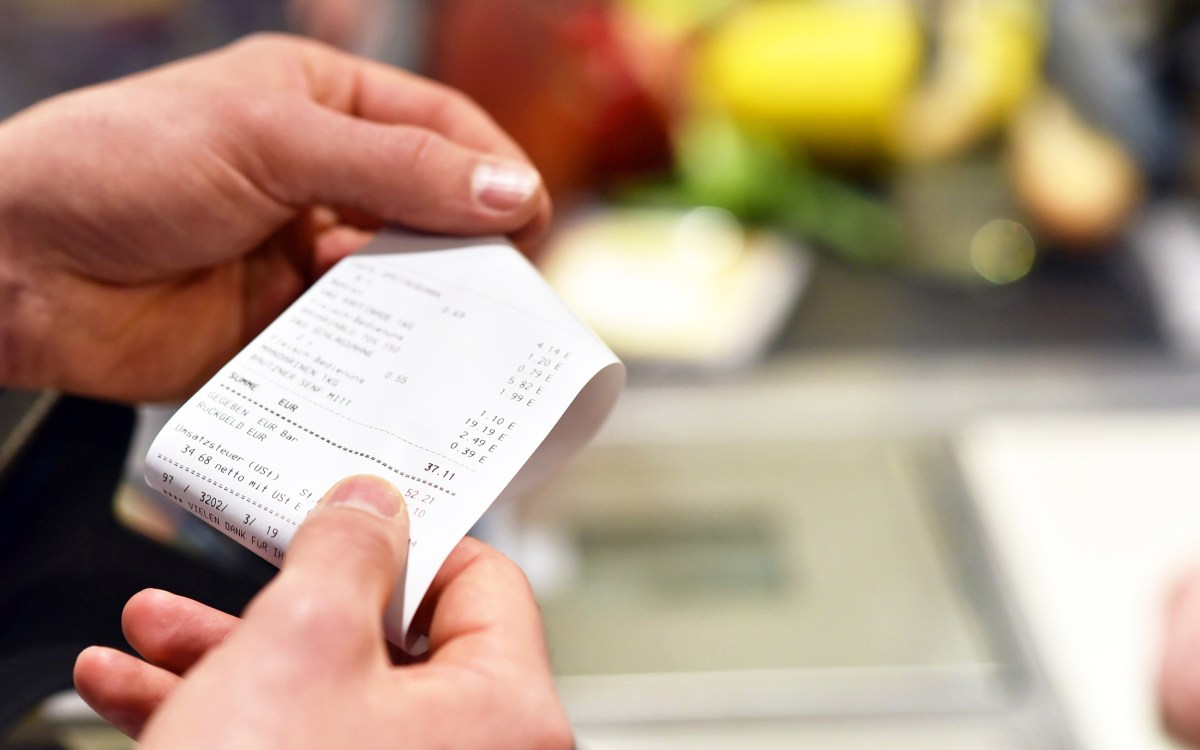
In a Q&A about rising prices, Harvard economist Jeffrey Frankel discussed whether President Biden’s $1.2 trillion infrastructure bill will drive up inflation.
AP Photo/Evan Vucci
What should Biden do about inflation? Mostly sit tight
Jeffrey Frankel says economy is basically on right track, and there are few things he can try, but COVID-related woes will ease
Many Americans were shocked by last month’s 6.2 percent leap in the consumer price index over last year’s figure, despite economists warnings for months that rising inflation was a normal and temporary byproduct of the recovering U.S. economy. Consumer demand is surging as COVID restrictions ease, they say, but products are in limited supply because of pandemic-driven difficulties getting goods manufactured and delivered. Still Americans are growing frustrated, and President Biden is facing dismal new approval numbers, ratcheting up fears among Democrats about what this might mean for next year’s midterm elections. But what can a president realistically do? The Gazette asked economist Jeffrey A. Frankel, James W. Harpel Professor of Capital Formation and Growth at Harvard Kennedy School, about what tools Biden has and how political expediency might affect the administration’s decision-making. The interview was edited for clarity and length.
Q&A
Jeffrey A. Frankel
GAZETTE: The 6.2 percent figure alarmed a lot of non-economists. Does it indicate something’s wrong with the economy?
FRANKEL: I don’t think it indicates anything is wrong with the economy if one allows for the pandemic and the recovery from the pandemic. But it is a high level of inflation, much higher than we’ve gotten used to over the last 20 years. Some forecasts that the effects would be very transitory or mild have been disproven. It’s stronger than some people were expecting.

GAZETTE: Why does it continue to climb by larger increments than expected?
FRANKEL: Demand has been recovering from the pandemic-induced recession faster than supply has. That’s to be expected. We know why supply is recovering slowly: A lot of people are staying out of the labor force for the time being for various reasons, and there are bottlenecks in the supply chain. Those will ease over time. But for now, further recovery in demand is pushing against capacity, and capacity is temporarily below what it should be in the long run. Real GDP has attained what it was before the pandemic, and the various measures of the labor force also indicate that we’re back to where we were before the pandemic. So, we got through it. But a long-run upward trend, in what economists call “potential output,” is always to be expected. We haven’t caught up with the long-run trend.
By no means has inflation ever been or should it be the primary indication of how well the economy’s doing. There’s a sense in which this is a good problem to have. Our current inflation is a result of rapid increase in demand and by some measures unprecedentedly rapid recovery from the recession, which is much better than having stayed with economic activity and employment as depressed as it was in early in the spring of 2020.
GAZETTE: The Federal Reserve based its approach to inflation on the idea that it would rise 2 percent on average over an undefined period of time, a strategy called flexible average inflation targeting. That has not happened. Was that a mistake?
FRANKEL: They clearly underestimated how much inflation was going to go up or how long it was going to last. Getting the forecasts wrong I don’t think has really had a serious effect on behavior. And in case you’re going to ask about politics, I don’t think that’s had an effect on what the Fed’s done. On the average inflation targeting, I wasn’t necessarily in favor of it, unlike many of my friends and colleagues. But it allowed inflation to overshoot somewhat above 2 percent, which is what you would want, given our circumstances. The AIT decision was done way before the pandemic. At a time when demand is increasing faster than supply, it’s inevitable that inflation is going to go above 2 percent unless you’re just going to have a continuation of the worst of the recession, which would be a much worse situation. So average inflation targeting has worked out better than I expected, in that they can say, with honesty, that “this is consistent with their targets,” whereas before that, they would have had trouble justifying inflation going above 2 percent.
Because of the inflation, which they had underestimated, they have started tapering now and will raise interest rates sooner than they had previously anticipated, based on other signaling. You might think that the end of the quantitative easing, which is what tapering is, and raising interest rates faster than they previously said, you might think that would spook the financial markets and precipitate a sharp fall in securities prices. But the current Fed has succeeded in signaling their intention so thoroughly, if they started raising short-term interest rates in the middle of next year, I don’t think that’ll catch markets by surprise.
“There’s a sense in which this is a good problem to have. Our current inflation is a result of rapid increase in demand and by some measures unprecedentedly rapid recovery from the recession.”
GAZETTE: The Biden administration has pledged without specifics to address the labor shortage and supply chain issues. What can be done to turn around these two complex problems?
FRANKEL: I’m not sure how much can be done. That’s an open question about the supply-chain bottlenecks. You would think that the ports and logistics companies would have plenty of incentive to get the job done. But the White House can and it helped a bit on the margin. On the labor force returning: If everybody got vaccinated, that would go a lot faster. We hear so much about vaccine reluctance, but what about a reluctance among workers to expose yourself to the virus, which is a more widespread phenomenon, I think.
In terms of what the president can actually control to reduce inflation, one neglected tool is trade policy. Former President Donald Trump put these tariffs on aluminum and steel, and everything we import from China — all kinds of goods. The tariffs raise prices to consumers. It seems to me a no-brainer to undo those barriers. Biden should be able to get China and other countries to reciprocally lower some barriers against us. But with or without that, removing tariffs could bring down consumer prices and prices to businesses for steel and aluminum and all kinds of inputs immediately. That’s the one thing that the government could most rapidly control.
Another tool that the administration could deploy if it wanted is to allow state governments implementing the new infrastructure spending to source from abroad if the price is lower, rather than insisting on buying American regardless of cost.
GAZETTE: Thus far, the Biden administration appears to have been following the advice of economists on inflation. But the political pressure is mounting. What actions should he take or not take now?
FRANKEL: What would be good to do would be to allow more imports, as I said, from an economics viewpoint. Maybe it doesn’t occur to the political people. But it would bring prices down on all kinds of household appliances, autos, and other goods. It would pay off right away.
GAZETTE: Presidents from both parties always fret about high gas prices because it’s the first thing voters mention when they complain about the economy. What could he do?
FRANKEL: There’s not much a president can do about the price of gas. Gas prices and energy prices, generally, are back to where they were in 2014, but still well below the peak of 2008 and, in real terms, the late 1970s.
The two things that Biden, like any president, reaches for when feeling political pressure and when choosing not to listen to the economists, is to try to jawbone oil-producing countries into producing more oil, which he’s already tried to do, and Trump tried to do it, too. We probably won’t see more of that because they already tried it and failed. The other one is the strategic petroleum reserve. The market for oil is a world market. I don’t think the strategic petroleum reserve would be a very effective tool. But he might try it.
GAZETTE: Opponents of the Infrastructure Investment and Jobs Act Biden signed into law this week argue that spending $1.2 trillion will drive up inflation. Are the two linked?
FRANKEL: The Republican argument is that Biden’s infrastructure bill and, hopefully coming, his social spending bill are adding to demand, and that’s what is causing inflation or will cause more inflation in future. And so, they would say, we shouldn’t expend for all those bills. That’s not an option Biden’s going to do, and also, that’s not right economically. A really big increase in demand, like further monetary or fiscal stimulus, would worsen inflation. But contrary to what you would think from these huge numbers — $1.2 trillion on infrastructure and more on social spending — those are very misleading, because: 1) they’re spread over 10 years; 2) some of that increased spending would be in line with a growing economy anyway; and 3) the White House proposal is to fully pay for the social spending bill by raising taxes in a targeted way and funding IRS enforcement. Now, it’s not very likely that’ll happen because politically, they won’t get the tax increases through. But I think they should pass these bills whether they succeed in raising taxes or not because infrastructure spending is stuff we badly need. But the basic logic that continuing to increase demand more rapidly than supply would lead to the prolongation of inflation or even rising inflation, I think is right.







